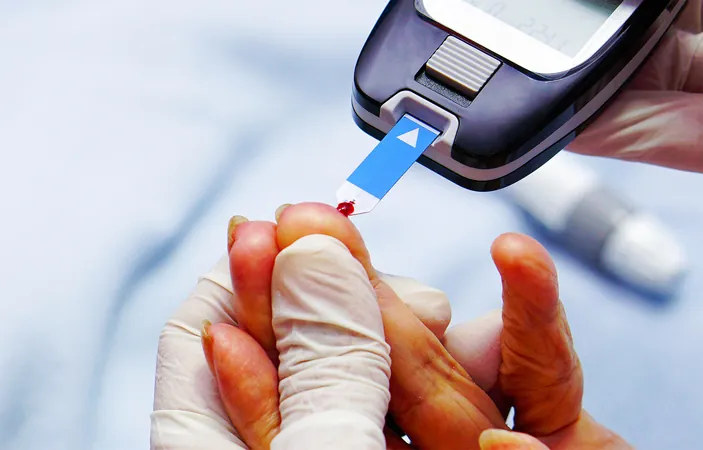
Groundbreaking Discovery: Type 5 Diabetes Officially Recognized—Here’s What You Need to Know!
2025-07-04
Author: Wei
Type 5 Diabetes Emerges as a Global Health Concern
In a major breakthrough for global health, the International Diabetes Federation has officially recognized Type 5 diabetes, marking a pivotal moment in diabetes classification. On April 9, 2025, it was confirmed that malnutrition-related diabetes, often misunderstood and underdiagnosed, now has a distinct place in the international medical community.
Why Type 5 Matters More Than Ever
With nearly one in nine adults affected by diabetes worldwide—over 250 million unaware of their condition—Type 5 diabetes highlights an urgent health crisis. Roughly 20 to 25 million adolescents and young adults in Asia and Africa have this new diagnosis, a troubling statistic that rivals HIV infection rates in these regions. Unlike its Type 2 counterpart, Type 5 arises from environments of scarcity rather than abundance, challenging long-held beliefs linking diabetes solely to overeating.
A Lifeline for Underserved Populations
Professor Peter Schwarz, president of the IDF, emphasized during the announcement that recognizing Type 5 is crucial for equitable healthcare. Different labels drive budget allocations, meaning this recognition could lead to improved screening and treatment programs for populations previously neglected in nutritional crises.
The Science Behind Type 5: Understanding Its Roots
Research shows that low-protein diets during critical growth periods, such as pregnancy, can impair the pancreas's ability to produce insulin, creating a legacy of diabetes risk. Evidence links low birth weight and childhood malnutrition to difficulties in glucose regulation later in life. In South India, young adults with a low body mass index were found to have significant blood sugar spikes, suggesting that undernutrition during pregnancy could have long-lasting effects.
Distinct Metabolic Traits of Type 5 Patients
Cutting-edge research has revealed that individuals with Type 5 diabetes exhibit significantly lower insulin secretion compared to healthy individuals, even while showing a normal sensitivity to insulin. This distinct metabolic fingerprint may inform better treatment strategies, positioning oral medications as potentially more effective than high-dose insulin injections, particularly in food-insecure settings.
Navigating Treatment Challenges: The Clinical Dilemma
Despite increased awareness, treating Type 5 patients remains challenging, as many doctors still operate under traditional obesity-centric models. Critics warn that this could lead to dangerous misdiagnoses—particularly for thin teenagers, who might be incorrectly classified as Type 1 diabetes patients, risking inappropriate and potentially life-threatening treatments.
A New Era of Intervention: Steps Forward
In response to these challenges, a dedicated IDF working group was launched to establish diagnostic criteria and treatment protocols specifically for Type 5. This initiative aims to test various treatment options, including low-dose insulin and structured nutritional programs, with the potential to reshape diabetes care in low-income countries.
Conclusion: The Future of Diabetes Management
As global health authorities mobilize to address Type 5 diabetes, the stakes couldn't be higher. Ensuring that economic resources and medical attention are properly aligned may prevent Type 5 from becoming yet another overlooked aspect of poverty-related disease. Through awareness and dedicated efforts, we can transform the future of diabetes management for millions.



 Brasil (PT)
Brasil (PT)
 Canada (EN)
Canada (EN)
 Chile (ES)
Chile (ES)
 Česko (CS)
Česko (CS)
 대한민국 (KO)
대한민국 (KO)
 España (ES)
España (ES)
 France (FR)
France (FR)
 Hong Kong (EN)
Hong Kong (EN)
 Italia (IT)
Italia (IT)
 日本 (JA)
日本 (JA)
 Magyarország (HU)
Magyarország (HU)
 Norge (NO)
Norge (NO)
 Polska (PL)
Polska (PL)
 Schweiz (DE)
Schweiz (DE)
 Singapore (EN)
Singapore (EN)
 Sverige (SV)
Sverige (SV)
 Suomi (FI)
Suomi (FI)
 Türkiye (TR)
Türkiye (TR)
 الإمارات العربية المتحدة (AR)
الإمارات العربية المتحدة (AR)